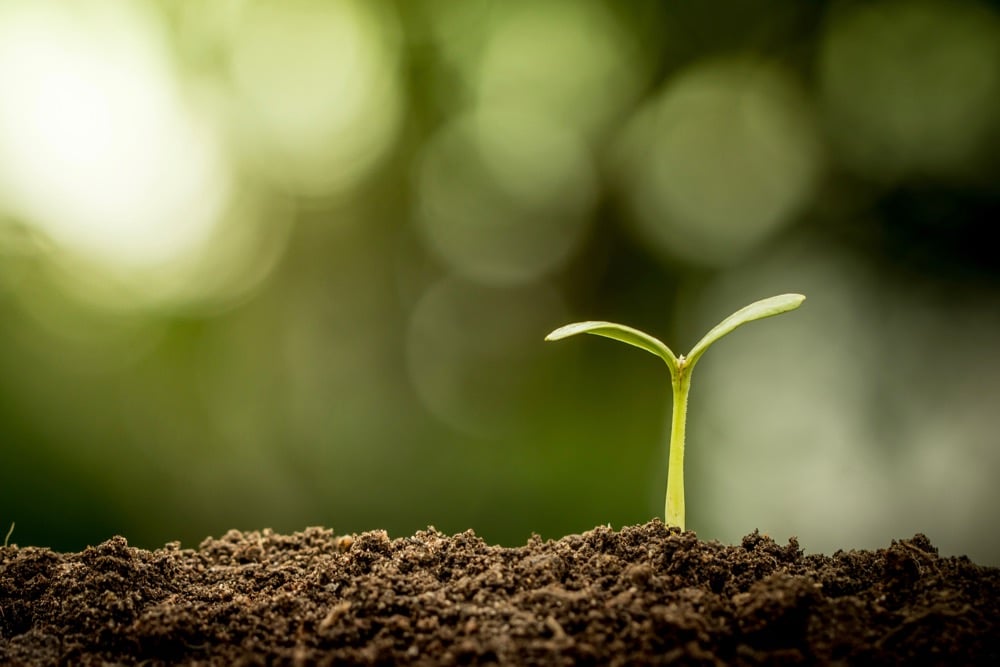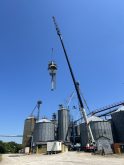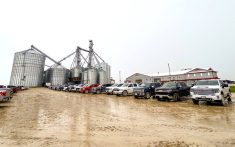Blockchain will revolutionize not only the way grain is traded, but also the way most transactions are conducted, according to Peter Vincent, chief technology officer and co-founder of Grain Discovery.
The company plans to launch an online grain trading platform using a blockchain system called Hyperledger for corn, wheat and soybeans in June 2019. The system is being piloted in Prince Edward County.
Why it matters: Blockchain will mean better access to markets and prices coupled with trusted, secure contracts, making grain sales more efficient and potentially more profitable.
Read Also

Ontario’s agri-food sector sets sights on future with Agri-Food 2050 initiative
The first-ever Agri Food 2050, a one-day industry event dedicated to envisioning the future of food and farming in Ontario,…
“Co-operation between people and organizations who don’t know or trust each other is at the heart of blockchain,” Vincent said during a presentation at the Ag 4.0.2 conference in Meaford on Nov. 1.
He pointed out that Bitcoin, the first application of blockchain, was born out of the financial crisis of 2008. The idea was to create a stand-alone currency and cut banks out of the money equation so that they would never again need to be bailed out by citizens.
Vincent pointed out that, while there’s been a lot of controversy around the valuation of Bitcoin, the technology platform it sits on has never been hacked.
Origins of blockchain
Basically, blockchain is an encrypted ledger that digitally records transactions. Words or pictures of the transaction are encoded so that there’s no way they can be changed.
“Now, everyone can see the transaction, who made it and that it’s true,” he said. “There’s no way to commit fraud in this system.”
Trust is at the core of blockchain. Vincent said that while, currently, lawyers, banks and governments are intermediaries in making sure that contracts are trustworthy and disputes are settled, blockchain will eliminate the intermediaries and deals will be made directly from, say, a seller to a buyer.
“Grain trading is a great candidate for blockchain,” he said, adding that, while technology has made strides everywhere in agricultural equipment and production, buying and selling grain is “still basically done the same way our grandfathers did.”
Glitches in the grain trade
Problems with the current system include the fact that farmers don’t have any bargaining power and are price-takers, not price-makers. They also are not paid a premium for quality, aside from grading, which Vincent calls a “blunt instrument.”
He pointed out that many environmentally responsible production practices such as reducing soil compaction or growing cover crops aren’t compensated because all the grain is mixed at the elevator.
A lack of transparency in grain pricing is another issue. With the company’s new platform, prices offered by companies from around the corner and across the country will be visible for all.
New service
Grain Discovery will be an online exchange at which buyers and sellers can make trades day or night. Producers will put offers up on the exchange at the price they want, and, when buyers decide they want the grain, a ‘smart contract’ is signed using the blockchain technology.
One of the most interesting features is that blockchain allows for full product traceability. If, for example, future consumers want to buy bread from grain that’s only grown in Grey County, that could be possible.
Vincent was quick to point out that producers control what data is put into the blockchain and who sees that data. Information can be shared with whomever the producer wants — for example an agronomist or insurance provider.
He said that the introduction of the Grain Discovery service is timely — with mobile and cloud technology, grain can be marketed anywhere and anytime; more on-farm grain storage means that more producers can choose when they will sell; and, like the old days of telephone networks, the blockchain system becomes much more robust and useful as more people participate in it.
For producers, it’s also a far more efficient way of selling grain into the market.
“You don’t have to call around to find out what the prices are — you can find them out any time and all the time,” Vincent said, adding that producers will be able to see all the bids and where prices are going.
Looking to the future, Vincent said that Ontario may even go the way of Australia, where producers can sell directly into export markets from the farm using blockchain technology.














